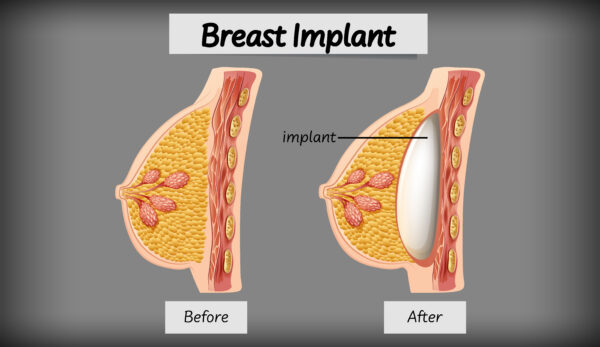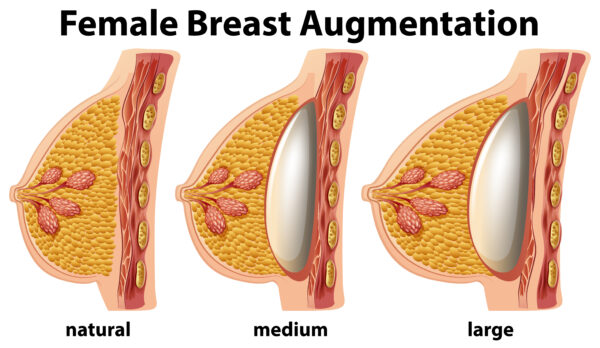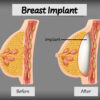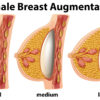





Free
Embark on a transformative journey with our exceptional range of medical treatments. As a leading medical tour operator, we offer a comprehensive selection of world-class treatments and procedures to address your unique healthcare needs. From advanced surgeries to cutting-edge therapies, our team of experienced professionals is dedicated to providing top-notch care and ensuring your comfort and satisfaction. Discover a new level of healthcare excellence with our tailored treatment options. Book now to start your journey towards a healthier and happier you.
Fat transfer breast augmentation is a surgical procedure that involves using liposuction to remove excess fat from one area of the body and injecting it into the breasts to enhance their size and shape. Here is a step-by-step explanation of the procedure:
Consultation and Planning: The process begins with a consultation with a qualified plastic surgeon. During this consultation, you will discuss your goals, expectations, and desired outcomes. The surgeon will evaluate your breast anatomy, skin quality, and overall health to determine if you are a suitable candidate for fat transfer breast augmentation.
Liposuction: The first step of the procedure is liposuction. The surgeon will use a thin tube called a cannula to remove excess fat from areas such as the abdomen, hips, thighs, or buttocks. The fat is carefully harvested to preserve its viability for transfer.
Fat Processing: Once the fat is removed, it is processed and purified to separate the fat cells from other substances such as blood and oil. This ensures that only the purified fat cells are used for injection into the breasts.
Injection: The purified fat cells are then carefully injected into the breasts using small, specialized cannulas. The surgeon strategically places the fat cells to achieve the desired augmentation and shape. Multiple injections may be performed to ensure even distribution and natural-looking results.
Closing Incisions: After the fat transfer is complete, the incisions made for liposuction are closed using sutures or adhesive strips. The incisions are typically small and well-hidden.
Recovery and Follow-Up: After the procedure, you will be monitored in a recovery area before being discharged. Your surgeon will provide specific postoperative instructions regarding pain management, wound care, and activity restrictions. It’s important to attend follow-up appointments to monitor your healing progress and address any concerns.
Fat transfer breast augmentation is suitable for individuals who are looking for a relatively small increase in breast size and prefer a more natural approach compared to traditional breast implants. Here are some key points regarding the suitability of fat transfer breast augmentation:
Conservative Size Increase: Fat transfer breast augmentation is ideal for individuals who desire a modest increase in breast size. It may not be suitable for those seeking a significant size increase.
Natural Results: Since fat transfer uses the patient’s own fat, it can provide a softer and more natural feel to the breasts compared to breast implants.
Body Fat Requirement: To be a suitable candidate for fat transfer breast augmentation, individuals need to have enough body fat available for harvesting. People with low body fat may not have sufficient fat to achieve the desired augmentation and may require breast implants instead.
Realistic Expectations: It’s important for individuals considering fat transfer breast augmentation to have realistic expectations. The procedure can enhance breast size and shape, but it may not provide the same level of projection and volume as breast implants.
Combination Procedures: Fat transfer breast augmentation can be performed in conjunction with other breast procedures such as breast lift or breast reduction to achieve the desired results.
Fat transfer breast augmentation is suitable for individuals who are looking for a relatively small increase in breast size and prefer a more natural approach compared to traditional breast implants. Here are some key points regarding the suitability of fat transfer breast augmentation:
Conservative Size Increase: Fat transfer breast augmentation is ideal for individuals who desire a modest increase in breast size. It may not be suitable for those seeking a significant size increase.
Natural Results: Since fat transfer uses the patient’s own fat, it can provide a softer and more natural feel to the breasts compared to breast implants.
Body Fat Requirement: To be a suitable candidate for fat transfer breast augmentation, individuals need to have enough body fat available for harvesting. People with low body fat may not have sufficient fat to achieve the desired augmentation and may require breast implants instead.
Realistic Expectations: It’s important for individuals considering fat transfer breast augmentation to have realistic expectations. The procedure can enhance breast size and shape, but it may not provide the same level of projection and volume as breast implants.
Combination Procedures: Fat transfer breast augmentation can be performed in conjunction with other breast procedures such as breast lift or breast reduction to achieve the desired results.
Fat transfer breast augmentation offers several advantages compared to traditional breast augmentation with implants. Here are some of the benefits associated with fat transfer breast augmentation:
Natural Procedure: Fat transfer breast augmentation uses fat from your own body, making it a more natural approach compared to using saline or silicone implants. The procedure avoids the use of foreign materials and reduces the risk of rejection.
Long-Lasting Results: Unlike breast implants that may require replacement over time, fat transfer is considered a permanent solution. The transferred fat cells can integrate into the breast tissue and provide long-lasting results.
Improved Body Contour: During the fat transfer process, excess fat is removed from other areas of the body through liposuction. This can result in improved body contour and a slimmer appearance in the donor areas.
Customizable Results: Fat transfer breast augmentation allows the surgeon to sculpt and shape the breasts according to your desired outcome. The surgeon can strategically inject the fat to create a customized look that suits your individual preferences.
Minimal Incisions and Scarring: The incisions made for liposuction and fat injection during the procedure are typically small, resulting in minimal scarring compared to traditional breast augmentation with implants.
Fat transfer breast augmentation, like any surgical procedure, carries certain risks and potential complications. Here are some of the complications associated with fat transfer breast augmentation:
Fat Necrosis: Fat necrosis refers to the death of fat cells. It is the primary risk associated with fat transfer breast augmentation and other types of fat grafting surgeries 1.
Infection: Although fat transfer breast augmentation is considered a safe procedure, there is a risk of infection. Proper sterile techniques and postoperative care can help minimize this risk 1.
Fat Reabsorption: Some of the transferred fat cells may be reabsorbed by the body over time, which can result in a decrease in breast size. This may require additional procedures to maintain the desired results 1.
Asymmetry: Achieving perfect symmetry is challenging in any breast augmentation procedure, including fat transfer. There is a risk of slight asymmetry in the size or shape of the breasts 2.
Calcification: In some cases, calcification can occur in the breast tissue after fat transfer. This can be detected on mammograms and may require further evaluation.
Unpredictable Results: The survival and retention of transferred fat cells can vary from person to person. While many individuals are satisfied with the results, there is a possibility of unpredictable outcomes.
Preoperative care for fat transfer breast augmentation is essential to ensure a smooth and successful procedure. Here are some key aspects of preoperative care:
Consultation and Evaluation: Schedule a consultation with a qualified plastic surgeon who specializes in fat transfer breast augmentation. During this consultation, the surgeon will evaluate your overall health, breast anatomy, and discuss your goals and expectations. They will determine if you are a suitable candidate for the procedure and address any concerns or questions you may have.
Medical History and Medications: Provide your plastic surgeon with a comprehensive medical history, including any previous surgeries, medical conditions, or allergies. It is crucial to disclose all medications, supplements, and herbal remedies you are currently taking, as some may interfere with the surgery or recovery process.
Smoking and Alcohol: If you smoke, it is highly recommended to quit smoking several weeks before the procedure, as smoking can impair healing and increase the risk of complications. Similarly, it is advisable to avoid alcohol consumption for a certain period before the surgery, as it can interfere with anesthesia and increase bleeding risks.
Preoperative Instructions: Your plastic surgeon will provide you with specific preoperative instructions to follow. These may include guidelines on fasting before the surgery, avoiding certain medications or supplements that can increase bleeding risks, and showering with a special antibacterial soap the night before or morning of the procedure.
Arrangements for Recovery: Plan for your recovery period in advance. Arrange for someone to drive you home after the surgery and assist you during the initial days of recovery. Ensure that you have a comfortable and supportive bra or compression garment to wear postoperatively as advised by your surgeon.
Healthy Lifestyle: Maintaining a healthy lifestyle before the surgery can contribute to better healing and recovery. Eat a balanced diet, exercise regularly, and get sufficient rest to optimize your overall health and well-being.
Proper postoperative care is crucial for a successful recovery after fat transfer breast augmentation. Here are some important aspects of postoperative care:
Follow Surgeon’s Instructions: It is essential to carefully follow the postoperative instructions provided by your plastic surgeon. These instructions may include guidelines on medication, dressing changes, activity restrictions, and follow-up appointments. Adhering to these instructions will help ensure proper healing and minimize the risk of complications.
Pain Management: You may experience some discomfort or pain after the surgery. Your surgeon may prescribe pain medication or recommend over-the-counter pain relievers to manage any discomfort. Follow the prescribed dosage and instructions for pain medication.
Compression Garment: Your surgeon may advise wearing a compression garment or supportive bra to help reduce swelling, provide support to the breasts, and promote healing. Follow your surgeon’s recommendations regarding the duration and type of garment to wear.
Rest and Recovery: Allow yourself sufficient time to rest and recover after the surgery. Avoid strenuous activities, heavy lifting, and exercise for the recommended period specified by your surgeon. Engaging in light activities and gradually increasing your activity level as advised can help promote healing.
Hygiene and Incision Care: Keep the incision sites clean and dry as per your surgeon’s instructions. Follow the recommended wound care routine, which may involve gentle cleansing and application of prescribed ointments or dressings. Avoid submerging the incision sites in water until cleared by your surgeon.
Monitor for Signs of Infection: Watch for any signs of infection, such as increased pain, redness, swelling, warmth, or drainage from the incision sites. If you notice any concerning symptoms, contact your surgeon promptly.
Follow a Healthy Lifestyle: Maintain a healthy lifestyle by eating a balanced diet, staying hydrated, and avoiding smoking and excessive alcohol consumption. These factors can contribute to better healing and overall well-being.
Attend Follow-Up Appointments: Attend all scheduled follow-up appointments with your plastic surgeon. These appointments allow your surgeon to monitor your progress, assess the healing process, and address any concerns or questions you may have.
Only logged in customers who have purchased this product may leave a review.
Fat transfer breast augmentation is a surgical procedure that involves using liposuction to remove excess fat from one area of the body and injecting it into the breasts to enhance their size and shape. Here is a step-by-step explanation of the procedure:
Consultation and Planning: The process begins with a consultation with a qualified plastic surgeon. During this consultation, you will discuss your goals, expectations, and desired outcomes. The surgeon will evaluate your breast anatomy, skin quality, and overall health to determine if you are a suitable candidate for fat transfer breast augmentation.
Liposuction: The first step of the procedure is liposuction. The surgeon will use a thin tube called a cannula to remove excess fat from areas such as the abdomen, hips, thighs, or buttocks. The fat is carefully harvested to preserve its viability for transfer.
Fat Processing: Once the fat is removed, it is processed and purified to separate the fat cells from other substances such as blood and oil. This ensures that only the purified fat cells are used for injection into the breasts.
Injection: The purified fat cells are then carefully injected into the breasts using small, specialized cannulas. The surgeon strategically places the fat cells to achieve the desired augmentation and shape. Multiple injections may be performed to ensure even distribution and natural-looking results.
Closing Incisions: After the fat transfer is complete, the incisions made for liposuction are closed using sutures or adhesive strips. The incisions are typically small and well-hidden.
Recovery and Follow-Up: After the procedure, you will be monitored in a recovery area before being discharged. Your surgeon will provide specific postoperative instructions regarding pain management, wound care, and activity restrictions. It’s important to attend follow-up appointments to monitor your healing progress and address any concerns.
Fat transfer breast augmentation is suitable for individuals who are looking for a relatively small increase in breast size and prefer a more natural approach compared to traditional breast implants. Here are some key points regarding the suitability of fat transfer breast augmentation:
Conservative Size Increase: Fat transfer breast augmentation is ideal for individuals who desire a modest increase in breast size. It may not be suitable for those seeking a significant size increase.
Natural Results: Since fat transfer uses the patient’s own fat, it can provide a softer and more natural feel to the breasts compared to breast implants.
Body Fat Requirement: To be a suitable candidate for fat transfer breast augmentation, individuals need to have enough body fat available for harvesting. People with low body fat may not have sufficient fat to achieve the desired augmentation and may require breast implants instead.
Realistic Expectations: It’s important for individuals considering fat transfer breast augmentation to have realistic expectations. The procedure can enhance breast size and shape, but it may not provide the same level of projection and volume as breast implants.
Combination Procedures: Fat transfer breast augmentation can be performed in conjunction with other breast procedures such as breast lift or breast reduction to achieve the desired results.
Fat transfer breast augmentation is suitable for individuals who are looking for a relatively small increase in breast size and prefer a more natural approach compared to traditional breast implants. Here are some key points regarding the suitability of fat transfer breast augmentation:
Conservative Size Increase: Fat transfer breast augmentation is ideal for individuals who desire a modest increase in breast size. It may not be suitable for those seeking a significant size increase.
Natural Results: Since fat transfer uses the patient’s own fat, it can provide a softer and more natural feel to the breasts compared to breast implants.
Body Fat Requirement: To be a suitable candidate for fat transfer breast augmentation, individuals need to have enough body fat available for harvesting. People with low body fat may not have sufficient fat to achieve the desired augmentation and may require breast implants instead.
Realistic Expectations: It’s important for individuals considering fat transfer breast augmentation to have realistic expectations. The procedure can enhance breast size and shape, but it may not provide the same level of projection and volume as breast implants.
Combination Procedures: Fat transfer breast augmentation can be performed in conjunction with other breast procedures such as breast lift or breast reduction to achieve the desired results.
Fat transfer breast augmentation offers several advantages compared to traditional breast augmentation with implants. Here are some of the benefits associated with fat transfer breast augmentation:
Natural Procedure: Fat transfer breast augmentation uses fat from your own body, making it a more natural approach compared to using saline or silicone implants. The procedure avoids the use of foreign materials and reduces the risk of rejection.
Long-Lasting Results: Unlike breast implants that may require replacement over time, fat transfer is considered a permanent solution. The transferred fat cells can integrate into the breast tissue and provide long-lasting results.
Improved Body Contour: During the fat transfer process, excess fat is removed from other areas of the body through liposuction. This can result in improved body contour and a slimmer appearance in the donor areas.
Customizable Results: Fat transfer breast augmentation allows the surgeon to sculpt and shape the breasts according to your desired outcome. The surgeon can strategically inject the fat to create a customized look that suits your individual preferences.
Minimal Incisions and Scarring: The incisions made for liposuction and fat injection during the procedure are typically small, resulting in minimal scarring compared to traditional breast augmentation with implants.
Fat transfer breast augmentation, like any surgical procedure, carries certain risks and potential complications. Here are some of the complications associated with fat transfer breast augmentation:
Fat Necrosis: Fat necrosis refers to the death of fat cells. It is the primary risk associated with fat transfer breast augmentation and other types of fat grafting surgeries 1.
Infection: Although fat transfer breast augmentation is considered a safe procedure, there is a risk of infection. Proper sterile techniques and postoperative care can help minimize this risk 1.
Fat Reabsorption: Some of the transferred fat cells may be reabsorbed by the body over time, which can result in a decrease in breast size. This may require additional procedures to maintain the desired results 1.
Asymmetry: Achieving perfect symmetry is challenging in any breast augmentation procedure, including fat transfer. There is a risk of slight asymmetry in the size or shape of the breasts 2.
Calcification: In some cases, calcification can occur in the breast tissue after fat transfer. This can be detected on mammograms and may require further evaluation.
Unpredictable Results: The survival and retention of transferred fat cells can vary from person to person. While many individuals are satisfied with the results, there is a possibility of unpredictable outcomes.
Preoperative care for fat transfer breast augmentation is essential to ensure a smooth and successful procedure. Here are some key aspects of preoperative care:
Consultation and Evaluation: Schedule a consultation with a qualified plastic surgeon who specializes in fat transfer breast augmentation. During this consultation, the surgeon will evaluate your overall health, breast anatomy, and discuss your goals and expectations. They will determine if you are a suitable candidate for the procedure and address any concerns or questions you may have.
Medical History and Medications: Provide your plastic surgeon with a comprehensive medical history, including any previous surgeries, medical conditions, or allergies. It is crucial to disclose all medications, supplements, and herbal remedies you are currently taking, as some may interfere with the surgery or recovery process.
Smoking and Alcohol: If you smoke, it is highly recommended to quit smoking several weeks before the procedure, as smoking can impair healing and increase the risk of complications. Similarly, it is advisable to avoid alcohol consumption for a certain period before the surgery, as it can interfere with anesthesia and increase bleeding risks.
Preoperative Instructions: Your plastic surgeon will provide you with specific preoperative instructions to follow. These may include guidelines on fasting before the surgery, avoiding certain medications or supplements that can increase bleeding risks, and showering with a special antibacterial soap the night before or morning of the procedure.
Arrangements for Recovery: Plan for your recovery period in advance. Arrange for someone to drive you home after the surgery and assist you during the initial days of recovery. Ensure that you have a comfortable and supportive bra or compression garment to wear postoperatively as advised by your surgeon.
Healthy Lifestyle: Maintaining a healthy lifestyle before the surgery can contribute to better healing and recovery. Eat a balanced diet, exercise regularly, and get sufficient rest to optimize your overall health and well-being.
Proper postoperative care is crucial for a successful recovery after fat transfer breast augmentation. Here are some important aspects of postoperative care:
Follow Surgeon’s Instructions: It is essential to carefully follow the postoperative instructions provided by your plastic surgeon. These instructions may include guidelines on medication, dressing changes, activity restrictions, and follow-up appointments. Adhering to these instructions will help ensure proper healing and minimize the risk of complications.
Pain Management: You may experience some discomfort or pain after the surgery. Your surgeon may prescribe pain medication or recommend over-the-counter pain relievers to manage any discomfort. Follow the prescribed dosage and instructions for pain medication.
Compression Garment: Your surgeon may advise wearing a compression garment or supportive bra to help reduce swelling, provide support to the breasts, and promote healing. Follow your surgeon’s recommendations regarding the duration and type of garment to wear.
Rest and Recovery: Allow yourself sufficient time to rest and recover after the surgery. Avoid strenuous activities, heavy lifting, and exercise for the recommended period specified by your surgeon. Engaging in light activities and gradually increasing your activity level as advised can help promote healing.
Hygiene and Incision Care: Keep the incision sites clean and dry as per your surgeon’s instructions. Follow the recommended wound care routine, which may involve gentle cleansing and application of prescribed ointments or dressings. Avoid submerging the incision sites in water until cleared by your surgeon.
Monitor for Signs of Infection: Watch for any signs of infection, such as increased pain, redness, swelling, warmth, or drainage from the incision sites. If you notice any concerning symptoms, contact your surgeon promptly.
Follow a Healthy Lifestyle: Maintain a healthy lifestyle by eating a balanced diet, staying hydrated, and avoiding smoking and excessive alcohol consumption. These factors can contribute to better healing and overall well-being.
Attend Follow-Up Appointments: Attend all scheduled follow-up appointments with your plastic surgeon. These appointments allow your surgeon to monitor your progress, assess the healing process, and address any concerns or questions you may have.
There are no reviews yet.
Only logged in customers who have purchased this product may leave a review.
Choosing the right hospital and physician are important factors to consider that significantly influence a patient’s treatment. The preferred choice for many patients is choosing private care.
Choosing the right hospital and physician are important factors to consider that significantly influence a patient’s treatment.
Reviews
There are no reviews yet.